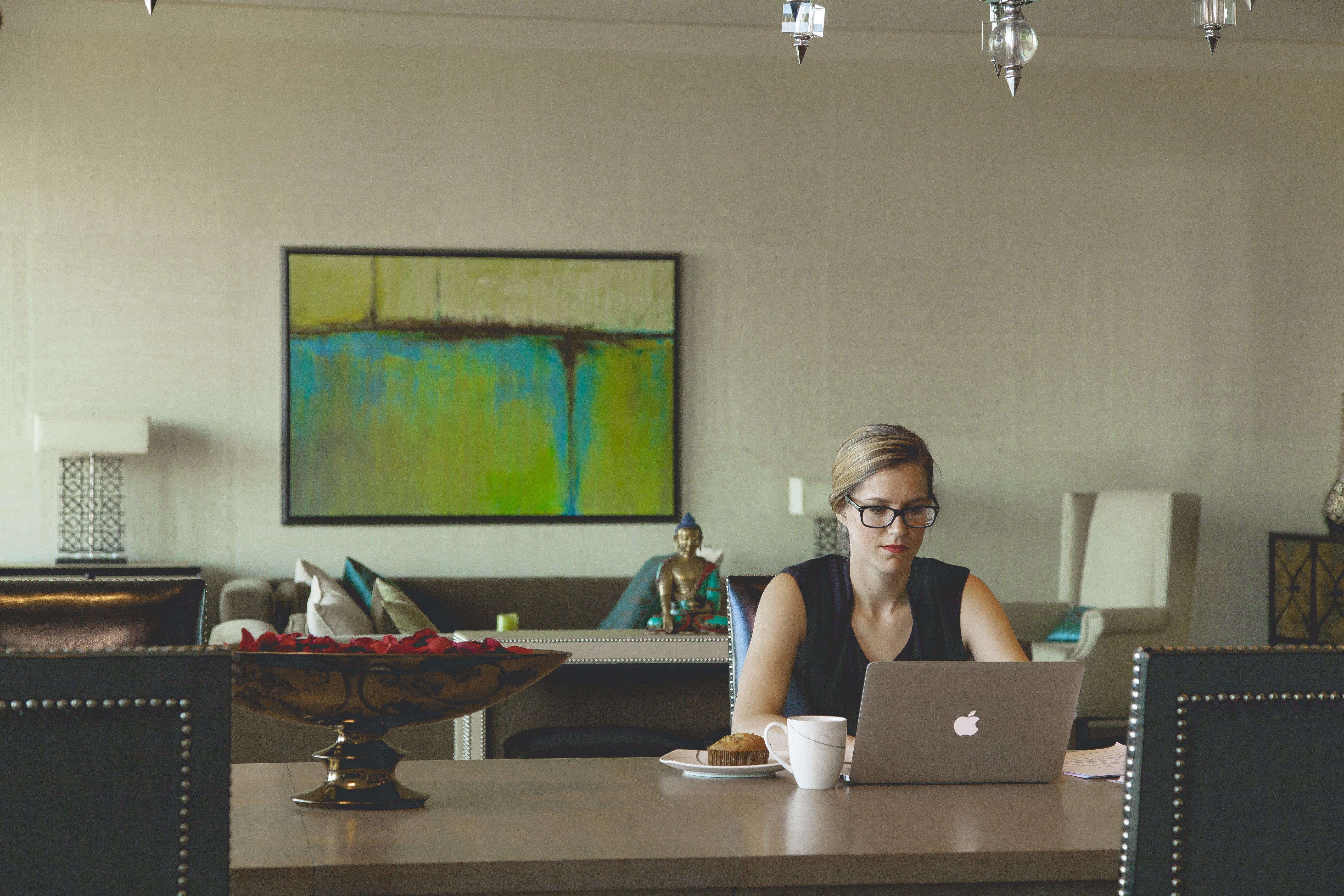

Negotiating is a creative act. To navigate conflict and strike a sustainable win-win agreement you need to think creatively. Creative thinking is a skill that can be developed and improved. Creativity is not just for artists and musicians.
Commercial enterprises need to create new products and services that have value for customers. Innovation and invention require novel ideas. Businesses need to solve problems and overcome obstacles. All solutions to problems start as ideas. These are all creative endeavors.

Creativity is usually thought of as an innate talent that people are born with. People are either creative or not, the thinking goes. Creativity is shrouded in mystery and the creative process in mystical mumbo jumbo.
There is the romantic idea of the lone creative genius who has a Eureka moment and something entirely new pops into their head. But creativity is actually synthetic, meaning it is a process that takes known ideas and combines them in a novel way. And this type of creativity can be learned, developed and improved upon.
Creativity is a name for the process of putting concepts and ideas together in new ways. It is a form of systems thinking. It has to do with pattern recognition and pattern forming. It has to do with taking ideas that work in one domain and applying them in another. This is how creativity performs the synthesis of using existing ideas and concepts as raw material and extruding new ideas.

Sir Isaac Newton who invented calculus and physics, two giant ideas that revolutionized our world, said “If I have seen further than others, it is by standing upon the shoulders of giants.”
One of the prerequisites of being creative is to remain curious and devour information from a wide range of subjects. Creativity is either combining seemingly disparate concepts in a new way or repurposing an idea from one application to another. This is called lateral thinking.
The concept of lateral thinking is related to creativity and problem solving. Lateral thinking is a concept introduced by Edward de Bono. He has written extensively on the subject since the 1960s. Lateral thinking is an approach to creativity and solving problems that is contrasted with step-by-step logic.
In our current world, we have many newly developed platforms and technologies that can be reassembled in novel ways. Thinking about them laterally and figuring out how they can be used to solve problems is a practical strategy for fostering innovation and invention.
Creativity is combining things in novel ways. Arthur Koestler thought of this combinatorial nature of creativity as “bisociation”. Routine skills of thinking operate on one plane of thought. A creative act of thinking resides in the collision of two or more thought planes that, out of habit, have not been put together before. And it takes imaginative effort.

Humor works in this way. It is a process of putting two things together in a way you weren’t expecting. Creativity works in similar ways in art, science, and business.

Being creative and cultivating creativity is not just for artists. Developing a working knowledge of the creative process is fundamental to being successful. Creativity is critical in all aspects of business. It is a fundamental part of problem solving and conflict resolution. Marketing, Branding, Advertising depend on creative approaches. Brainstorming alternatives in planning negotiations relies on creativity. Products and services and their continuous improvement are creative processes. Deal making is always creative. Leadership is an art; it is creative. Business is a creative act.
Creativity is combinatorial and innovation is collaborative. Getting a diverse group of people to collaborate towards goals that require creative solutions is the essence of managing and leading. You need to get people from different disciplines with different expertise to contribute as peers to an outcome that isn’t known in advance. You have to be open to ideas regardless of their origin and create the right environment for them to flourish.

Ideas can come from anywhere. Have humility in the face of creativity. Senior people in companies don’t have a monopoly on ideas. Neither does long experience. In fact, experience can hinder creative thinking by limiting possibilities because “it’s always been done this way”. Encourage ideas from all staff. You need all the ideas you can get.
Cultivate a creative environment. David Ogilvy, the original Mad Man of advertising, is helpful here:
“Kill grimness with laughter. Maintain an atmosphere of informality. Encourage exuberance. Get rid of sad dogs who spread gloom.”
There is a tension between action and contemplation in management and leadership. Being decisive is a key attribute of a good leader. But it is equally important to think and plan strategically and that takes time and contemplation. We have to be thoughtful and disciplined not to let our tendency to act all the time get in the way of giving ourselves time for deeper uninterrupted thought.

John Cleese of Monty Python fame has a great lecture on creativity.
This lecture is well worth listening to. Mr. Cleese starts with an anecdote about having lost some pieces of writing and then ending up rewriting them from memory, only better than the original. The take-away here is about allowing ourselves the time to let ideas steep and allow the unconscious to work. “I was embarrassed that I lost our work, so I rewrote it from memory, straight off in a hurry. Then I discovered the original and the one I’d done very quickly was better than the original. I didn’t spend any time thinking about it, so how could it be better than the original?”
“The only thing I could think was that my unconscious had been working on the sketch and improving it ever since I wrote it. I began to see a lot of my best work seemed to come as a result of my unconscious working on things when I wasn’t really attending to them.”
“I’m not talking about the Freudian unconscious but the intelligent unconscious. We can’t control our unconscious but we can look to how we can create the circumstance in which it becomes easier for us to work with our unconscious.”
Mr. Cleese eloquently acknowledges that ideas and breakthroughs percolate in the deep recesses of our brain. He then talks about two key, practical traits of truly creative people by studying creativity in architects.
“…creative architects knew how to play. They could get immersed in a problem. It was almost childlike, like when a child gets utterly absorbed in a problem. The second thing was that they deferred making decisions as long as they could. This is surprising.”
“If you have a decision to make, what is the single most important question to ask yourself? I believe it’s ‘when does this decision have to be made’? When most of us have a problem that’s a little bit unresolved, we’re a little bit uncomfortable. We want to resolve it. The creative architects had this tolerance for this discomfort we all feel when we leave things unresolved.”
“Why would those two things be of importance? The playfulness is because in that moment of childlike play, you’re much more in touch with your unconscious. The second is that when you defer decisions as long as possible, it’s giving your unconscious the maximum amount of time to come up with something.”
He goes on to talk about two modes of thinking, one rational and one playful.
“Guy Claxton, the author of Hare Brain, Tortoise Mind, says there are two kinds of thinking: one dependent on reason and logic, and one less purposeful, more playful, leisurely and dreamy. In this mode, we are mulling things over, almost in a meditative fashion, we are pondering a problem versus earnestly trying to solve it. He says allowing the mind time to meander is not a luxury but a necessity. You need the tortoise mind, such as Einstein described, as much as you need the hare brain.”
“The hare brain loves clarity; it wants everything to be expressed in a very simple, straightforward clear way. Tortoise mind doesn’t expect clarity; it doesn’t know where the illumination is going to come from. The language of the unconscious is images. That also means a lot of times when you’re being very creative you can feel very confused. You don’t know where you are or where you’re going. And you can tolerate that and continue to defer the decision. Because you’re taking your time in tortoise mind, if you have a question, you’re much more likely to get interested in the question.”
“One other important distinction between the two is that hare brain always treats perception as not being important, when in fact how you perceive things is enormously dependent on your emotional state. And when you’re more relaxed and focused, you’re much more likely to be more aware.”
“Now I want to explain about getting into tortoise mind. The enemies of tortoise mind are anxiety and interruptions. The moment you get anxious or interrupted you go back into hare brain. What you have to do is give yourself a place where you’re not going to be interrupted for about an hour, because it takes time for your thoughts to settle. You have to create boundaries of space and then you have to create boundaries of time. You need to give yourself the time to let these ideas come up because it deals in the confusion and images and very subtle things.”
“That’s why when you start on something that’s fundamentally creative, don’t bring the old critical mind in too quickly. Let the thing fall, find out what it is. And then, by all means, bring hare brain in to evaluate them, because you’ll get ideas, but not all of them will be good.”

Creativity is not the exclusive domain of some “creative class.” It is something we all need to be aware of developing and continuously improving so we can negotiate better and make better decisions based on more compelling visions.
Skip Business School. Educate Yourself.

Here is a slide deck with more ideas about enhancing and developing creativity.
Receive my 7 day email course
Take your finance skills to the next level with my 7-day corporate finance email course. You'll learn all the essential topics from financial analysis to risk management in a fun, engaging format. Each day, you'll receive an email with practical examples, exercises and resources. Perfect for aspiring finance pros or anyone looking to expand their knowledge. Get ready to transform your finance game!
If you like this article. Here are some more articles I think you might like.

The Road to Becoming a Unicorn: A Quick Guide to Startup Funding Rounds

Oh Behave! Behavioral Economics: Why we do what we do.




